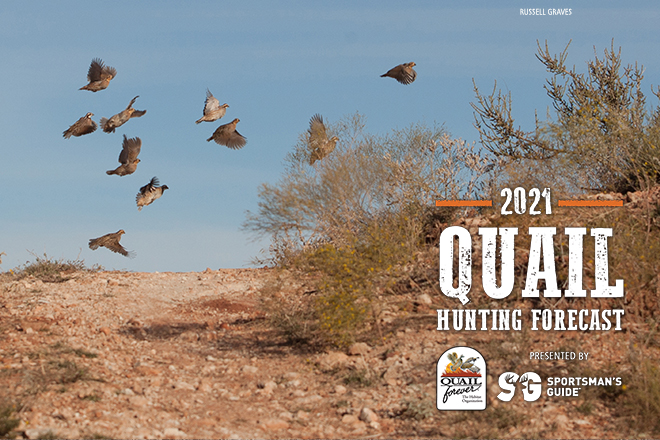
By Greg Breining
This fall promises to be a tough year for Missouri quail hunters. Statewide, roadside counts are down by nearly 50 percent from last year. Quail strongholds in the northwest, north central, west, and southwest are all down.
A shining exception is the northeast (also known as the Northeast Riverbreaks) where the number of quail counted is nearly double what it was last year and more than double the running 10-year average.
“That’s as good as it’s been in that region in quite a while,” says Beth Emmerich, research scientist for the Missouri Department of Conservation. In fact, it was the only part of the state above the 10-year average. “It was the highest region this year for sure.”
Habitat, Broods, and Counts
The question for hunters: Should they trust those numbers? Says Emmerich, “I tell people to take it with a grain of salt.”
Let’s back up and look at the numbers in greater detail.
In the Northwest Prairie, the count compared with last year was down a whopping 92 percent and 84 percent below the 10-year average.
North central (Northern Riverbreaks): Down 72 percent from last year and 56 percent below the 10-year average.
Western Prairie: Down 35 percent from last year and 58 percent from the average.
Western Ozark Border: Down 76 percent and 66 percent from the average.
Ozark Plateau: Down 40 percent from last year and 44 percent from the average.
Northern and Eastern Ozark Border: Down 93 percent from last year and 86 percent from the average.
The sole exceptions to this dismal trend were the aforementioned Northeast Riverbreaks (up 92 percent and 109 percent above the long-term average), and the Mississippi Lowlands (the Boot Heel—not a typically strong quail area), which was up 33 percent from last year, though still down 30 percent from average.
Emmerich blames the poor showing across most of the state on punishing winter snow, ice, and cold. “The nesting season has been fine. we haven’t experienced big rains, not anything super out of the ordinary as far as nesting, but I’m guessing the amount of snow we had on the ground so long in the winter was probably detrimental.”
The mystery—what explains the rosy forecast in the northeast? “Honestly, I’m kind of surprised by that because it’s where I live, so I’m familiar with the weather there. It was awful. Not only did we have snow, we had a long period of ice cover on top of the snow, which is real difficult for quail. I’m guessing it just must have gotten off enough in the fields for them to get by. But it was a long and cold winter.”
Top Spots
So, what should a hunter do?
It’s hard to pass up the northeast, even if the numbers seem too good to trust. Emmerich, in fact, recommends the entire northern third of the state because it is traditionally the best for quail and has a lot of public land to hunt. “I’ve heard good reports from northwest Missouri [about broods] for pheasants and quail. I didn’t see that in the roadside data.”
She also recommends southwest Missouri simply based on past performance, even though numbers are down. “They generally have good quail numbers there.”
She points hunters toward the state’s Quail Restoration Landscapes, where habitat work on both pubic and private land has led to “some pretty decent success stories” with quail densities of up to a bird per acre.“That’s very good. That’s probably as good as we can get with the kind of landscape we have in Missouri,” she says. A GIS map of the quail landscapes will help hunters find public areas to hunt.